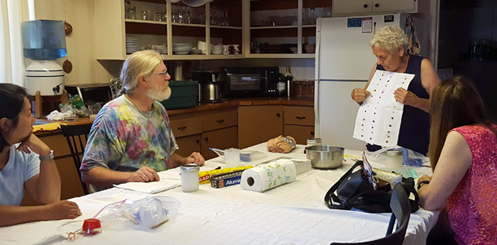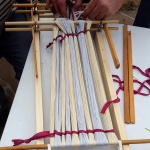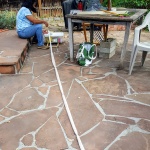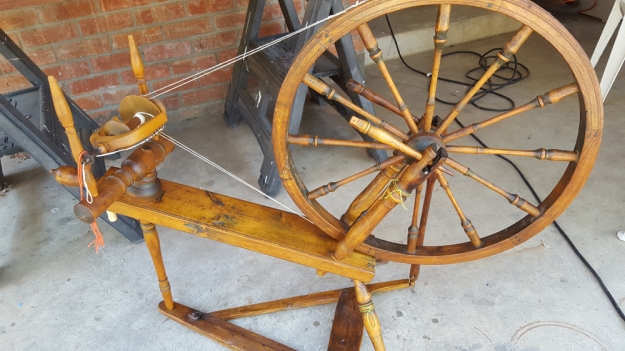Today’s meeting found us experimenting with earth dyes. First we painted our fabric with fresh soy milk (see http://box19.ca/maiwa/pdf/EarthPigments.pdf ) in the areas where we wanted to use our dyes.

 While we hung them out to dry, we chose our colors from The Dye Works natural pigments.
While we hung them out to dry, we chose our colors from The Dye Works natural pigments.
 Using a teaspoon of pigment mixed with a tablespoon of soy milk to dampen it, we made our initial colors stirring to make sure the pigment was thoroughly dissolved.
Using a teaspoon of pigment mixed with a tablespoon of soy milk to dampen it, we made our initial colors stirring to make sure the pigment was thoroughly dissolved.  We put our colors in small containers, carefully labelled them and tried to decide how we would decorate our fabric.
We put our colors in small containers, carefully labelled them and tried to decide how we would decorate our fabric.  After the pigments have been thoroughly dissolved, we found some thickened after setting. There still needs to be gum tragacanth thickener added to all the pigments to keep the pigment suspended and to prevent bleeding. It may also help make delicate designs easier to apply to the fabric.
After the pigments have been thoroughly dissolved, we found some thickened after setting. There still needs to be gum tragacanth thickener added to all the pigments to keep the pigment suspended and to prevent bleeding. It may also help make delicate designs easier to apply to the fabric.
Everyone will take the items we have prepared and decorate their fabric. We will post the results of this experiment in the future.


















